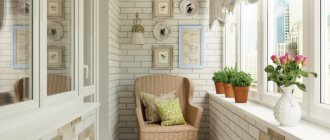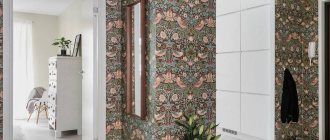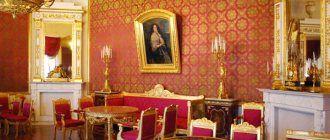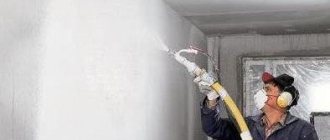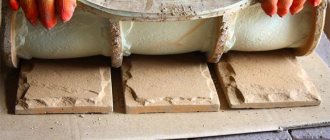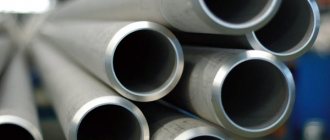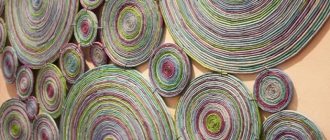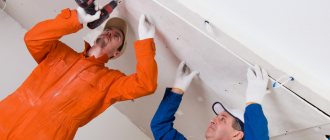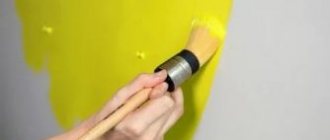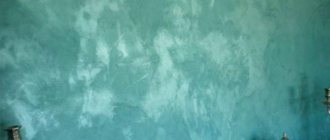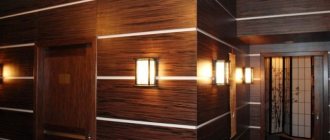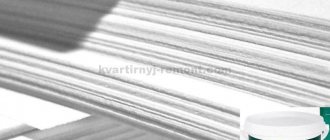The technology for manufacturing MDF came to our country from America thirty years after the start of industrial production of the material overseas. Slabs are not used for external work for several reasons.
- Expensive. There are many varieties of lumber that have higher performance at lower cost.
- Insufficient physical strength. In terms of resistance to dynamic and static loads, the slab does not meet the requirements of developers. It is easy to damage, but difficult to replace.
- Susceptibility to precipitation and temperature climatic conditions. There are options for moisture-resistant boards, but they are not suitable for cladding external wall surfaces.
MDF board
MDF board is used for the manufacture of furniture and cladding of internal wall surfaces. It is these cases that we will talk about. Painting of MDF facades will only be considered for enclosed spaces. Let us separately focus on painting the facades of MDF furniture.
MDF boards of different shades
Types of paints for MDF
Painted MDF
There is no need to list specific brands, and it is impossible to do so. We will only talk about the varieties and brief characteristics of paints, taking into account the method of their manufacture. The specific type must be selected taking into account the operating conditions of the MDF board, design preferences and financial capabilities. The range in price and quality is quite wide, there is plenty to choose from.
| Type of paints | Brief performance indicators |
| Water based | The most popular for painting large surfaces, they have satisfactory performance characteristics and are completely safe for residents. They can be white or colored, for interior and exterior work. |
| Acrylic-silicone | Combines the advantages of acrylic and silicone paints, an environmentally friendly product. Inhibits the proliferation of microflora and mosses, and has high levels of resistance to mechanical stress. |
| Silicone | They repel water and are not afraid of moisture and high temperatures. Surfaces are easily cleaned from dust and dirt. Due to their high elasticity, they can easily compensate for thermal expansion of MDF boards. |
| Polyvinyl acetate | Some of the cheapest, recommended for use indoors with minimal risk of damage. During use, you should strictly follow the manufacturers' recommendations, otherwise peeling will occur. |
| Oily | Traditional dyes, in addition to giving a beautiful appearance to surfaces, effectively protect them from moisture penetration. To increase adhesion, it is recommended to use primers. |
| Alkyd | They have a perfectly smooth surface and are made on the basis of alkyd enamels. Plastic, resistant to abrasion. Disadvantage: they fade quickly when exposed to direct sunlight. |
Before buying paint, calculate the surface area and purchase materials with a reserve. Consumption is indicated by the manufacturer. If it is recommended to coat the surface with a primer before painting, do not simplify the work. Insufficient adhesion of paint to the MDF board causes peeling. As a result, there is a need for expensive and time-consuming repairs.
What paints are suitable for MDF
Prices for different types of construction paints for wood
Construction paint for wood
Paint application instructions
Before starting work, clean the surfaces again from dust, carefully wipe all parts and furniture cabinet doors with a degreaser. It is acceptable to use a brush for painting, but the process will be more difficult and longer. It's better to use a spray gun. Stages of work:
- First, the paint material itself is prepared, following the manufacturer’s recommendations.
- Paint is poured into a special compartment of the spray gun, and the settings are set so that the spray area is not large.
- You should start painting from hard-to-reach places, then move on to the main part.
- It is advisable to cover the item in several layers, waiting 20 minutes between each layer for drying.
If a beginner is working with a spray bottle, then the first application is done on an unnecessary surface in order to practice.
It is recommended to apply varnish to the dried item; it will give a glossy finish. In this case, they monitor the cleanliness of the room. The work is carried out similarly to painting, but the layers are applied at intervals of ten minutes. Polishing completes the work.
The article described how to properly paint MDF panels; the process takes a lot of time. And it requires attentiveness from the master. When you decide to carry out the process yourself, it is advisable to carry out a test painting of old objects, then you can learn the basic principles. After all, the work is labor-intensive, and spoiling an expensive furniture set will not be very pleasant. If everything is done correctly, the result will be a beautiful and bright item that will look like new.
Types of varnishes for MDF
The technology of coating surfaces with varnish is much more complicated than working with paints, but the effect justifies all the effort. When choosing a specific varnish, you need to take into account not only its properties and price, but also the location of application and operating conditions. The following types of varnishes can be used to coat MDF boards.
| Varnish type | Composition and brief characteristics |
| Alcohol | Made from ethyl alcohol and artificial resins. In terms of price, they belong to the low category; drying time, depending on the conditions and thickness of the layer, is 20–30 minutes. |
| Alkyd-urea | Two-component compositions are characterized by increased strength. They consist of urea and alkyd resins; a hardener must be added before use. They are characterized by increased strength and excellent shine. |
| Epoxy | Two-component, increased impact resistance, can have prolonged contact with water. Used to cover MDF tables. |
| Polyester | Resistant to aggressive chemical compounds, withstands elevated temperatures well. Multicomponent varnishes on polyester resin. |
| Nitrocellulose | The composition contains resins, plasticizers and solvents. They have high water resistance, are polished, and have average mechanical strength. |
| Acrylic-urethane | They are diluted with water, are safe for health, and have increased adhesion to surfaces. They can be exposed to high temperatures and humidity for a long time. |
| Polyurethane | They are produced in one-, two- and three-component versions. The complete hardening time is up to two weeks, they are characterized by increased wear resistance, and have a high adhesion coefficient with all lumber. |
| Acrylic | Odorless, non-toxic, diluted with water. Prolonged contact with food is allowed. In terms of performance characteristics they have average indicators. |
Sherwin Williams Wood Classics Polyurethane Varnish (Sherwin Williams)
This information will help when choosing a brand of varnish; consider as many individual factors as possible. Keep in mind that the appearance and service life of MDF facades largely depend on the quality of the composition.
Prices for various types of construction wood varnishes
Construction varnishes for wood
Why do this?
Many people wonder: is it possible to paint MDF at home, and why is this necessary? The answer to the first part of the question is yes. Indeed, you can paint the panels yourself. But it’s worth making a reservation right away: if you don’t have a spray booth at hand, the result is not always ideal. The coloring procedure is necessary for the following reasons:
- Painted elements become more resistant to high temperatures and humidity. Therefore, they can be used in the kitchen and bathroom, where they can fulfill different roles.
- By decorating, it is possible to diversify a dull interior and refresh the appearance of the room. The shade is chosen based on the design ideas.
- Painting MDF panels is also necessary in order to extend their service life.
Painting MDF allows you not only to diversify a boring interior, but also to extend the life of the product.
Of course, this option also has some disadvantages. For example, this procedure is sometimes much more expensive than using decorative films. In addition, the surface becomes prone to fading.
Technology for painting furniture facades made of MDF
Quite complex work that requires care, skill and patience. They are made in several stages, each of which significantly affects the final quality. It is much faster and better to paint facades with a spray gun; if you don’t have one, use high-quality brushes with soft, durable bristles.
A classic and highly wear-resistant brush
The temperature in the room should be at least +20°C, if there are a lot of individual elements of the MDF facade, then think about the places for drying them: racks, supports, etc. In most cases, after painting the slabs, it is recommended to varnish them, it protects the surfaces from damage, hides minor flaws and significantly improves the design look. Varnishing is a complex process that requires special tools and equipment. We will tell you how MDF boards are varnished below, but for now we will focus on painting.
We have already told you what criteria to use to choose paint. For furniture facades, we can only add that the paint color should take into account the purpose of the furniture and the intensity of its use.
Step 1. Surface preparation. For furniture facades, in addition to cleaning from dust and degreasing the surfaces, it is imperative to sand them with sandpaper No. 150–180.
Sanding MDF before painting
Working manually is long and difficult, and achieving the desired quality is almost impossible. We recommend using a professional electric reciprocating surface grinder or cylindrical grinding unit.
Sanding MDF surface
The edges are sanded with special four-sided sponges. It is advisable to work in a respirator. When grinding, do not stop the tool in one place; it should always be in motion. One trace must overlap the next by at least a third of the width. There is no need to press the sandpaper too hard; if problem areas remain on the surface, it is better to go over the entire area again rather than making a depression in one place.
Practical advice. Any grinding is accompanied by a large amount of fine dust. Take all measures to ensure that it does not fall into adjacent rooms.
Step 2. Thoroughly clean surfaces from dust. Simple brushes are not enough; you definitely need a powerful vacuum cleaner or compressor. Check the condition of the parts; if there are sharp edges, remove them. The IMF does not have much strength; sharp corners will certainly crumble.
Step 3 . Prime the surfaces. Experienced craftsmen recommend using two types of primer, twice each. You can prime with one primer without stopping for drying; apply the first layer with horizontal movements of the spray gun, and the next immediately with vertical movements. Regulate the amount of primer; there should be no puddles on the surface. The first primer is used to prevent further absorption of materials, and the second to improve the adhesion coefficient between them. The second one is applied only after the first primer has completely dried. Primer consumption per square meter is 80–100 grams.
Primer for MDF
Practical advice. It is very difficult for novice craftsmen to determine consumption by eye. To gain this skill, we recommend taking a small piece of MDF and weighing it on an accurate scale. Coat with primer and immediately re-weigh. Next, the area of the sample is calculated and the increase in weight is determined. Using basic mathematical calculations, the primer consumption is determined. Not enough - add more. Now remember what the MDF surface looks like, covered with the optimal layer, and in the future prime with the same amount.
Applying primer
We strongly recommend working only with a pneumatic sprayer; using a brush will never achieve “factory” quality. A professional will always notice traces of lint. Moreover, the sun's rays fall on the furniture from different angles, and such lighting enhances all the shortcomings of facial coverings. Immediately prime the ends of the structures.
If you need to paint the back side of the slab, start work only after the front side has dried. The drying time is indicated by the manufacturer, but adjustments must be made taking into account the actual microclimate in the room.
It is more convenient to apply the primer with a sprayer
Step 4. Start sanding the soil, use special sponges. If you don’t have them, take dishwashing sponges; they have adhesive tape glued to the back side. This special material, used for fine grinding, not only levels out the coating, but also leaves micro-scratches on the surface that improve the adhesion of the next coating. Movements are arbitrary in different directions. Circular movements of the sponge are not recommended, only back and forth.
Scotch Brite sponge
Step 5: Blow or vacuum away any dust that has accumulated on the surface. Working with a spray gun is very convenient for another reason - you can shut off the paint supply and use it to clean surfaces from dust like a compressor.
Step 6 . Proceed with applying the second type of primer. It is predominantly white in color and improves the performance of the following coatings. It also needs to be primed twice followed by sanding. Blow the dust off the MDF again. The algorithm of actions is no different from the technology described above.
Applying a second coat of primer
Step 7. The second layer of primer must be carefully sanded with electric tools using fine sandpaper. Do not rush, large flaws will already become noticeable on the finished product. If you have no experience working with such machines, we strongly advise you to practice on unnecessary pieces of MDF. You will learn how hard to press the sanding paper to the surface, how quickly to move it, what thickness of MDF can be removed in one pass, etc.
Step 8: Prepare the paint. The preparation technology is indicated by the manufacturer on the packaging.
Painting MDF panels
Painting MDF facades
Follow all recommendations. We have already mentioned that to work with a spray gun, the consistency must be more liquid. Immediately paint twice in transverse directions. You should already have practical experience in determining the quality of the coating and the amount of paint. Paint consumption ranges from 60–180 g.
Polishing the painted surface
Painted polished MDF board
After the coating has dried, you can begin varnishing the surfaces. For furniture interiors this is a mandatory step. The varnish not only serves as additional and reliable protection, but also significantly improves the appearance of MDF products.
Painted MDF furniture facades
Varnishing
The procedure is performed according to the instructions:
- The varnish is prepared for use.
- The first layer is applied at the rate of about 150 grams per square meter.
- After waiting for the first layer to dry well, apply a new layer.
- Repeat the drying process.
- Final sanding begins. First, sandpaper with a coarse grain is passed over the surface, then a finer one is used. To avoid lumps forming, spray the area with water.
- The panel is left for several days (from 4 to 7) and polished. For this it is better to use a power tool.
There are many tips on how to properly paint MDF. The main thing is to follow a clear plan and be careful.
Coating MDF boards with varnish
We will describe how this is done below. But for quality, four main conditions must be met:
- do not use cheap varnishes;
- strictly adhere to technology;
- have the necessary tools and equipment;
- have experience in performing complex painting work.
You will gain experience in performing such work and the ability to use tools while priming and painting products; working with varnish will be much easier. You can determine the amount of varnish on the surface by eye, and the spray gun will “automatically” move in the right directions and at the optimal speed.
Step 1. According to the instructions, prepare the varnish, consumption is approximately 100-150 g per square meter.
Open and mix the varnish
Start coating with varnish from the ends of the MDF; due to this technology, it is possible to minimize the number of areas with uneven thickness. A little bit of varnish on the front surface does not pose a threat to the final quality.
The process of applying varnish using a brush
After the first layer has dried, sand it with the finest abrasive. Professionals recommend using abrasive fiber No. 1200 according to the international classification. It can be purchased in specialized stores.
Sandpaper No. 1200
Step 2. Remove dust from the surface. Examine surfaces from different angles in a well-lit room. Everything is fine - cover the surface with a second layer of varnish. By the way, it is recommended to coat some facades with varnish up to 0.5 mm thick, and for this you will have to increase the number of layers to five or more. At industrial enterprises, the technology is different, where the varnish is immediately poured onto the surface of the required thickness, then the sheets are fed on a conveyor into drying chambers. This technology cannot be used at home.
Step 3 . The quality is satisfactory - proceed to fine grinding and polishing of the finishing layer. For fine sanding, use Velvet No. 1500, 2000 and 3000. Gently but thoroughly work the surface with each number, periodically removing dust.
SIA VELVET Grinding wheels
Practical advice. The quality of grinding will improve significantly if the surfaces are slightly moistened with water. The varnish will not overheat; during work, microcracks will not form on the surface from the effects of abrasive materials. Microcracks refract light rays, the surface becomes matte.
Go over the entire surface with each number at least three to four times. The pressing force is slightly less than when grinding the primer. Sanding takes a lot of time. If you are tired, it is better to postpone the work to the next day rather than stop completely.
Step 4: Polishing. For polishing you need a special polishing paste and a perfectly smooth hard circle. There are many pastes, choosing is not a problem. Study the recommendations and compare them with your individual conditions. Take your time, constantly check the condition of the surfaces using light.
Polishing
If you have a fairly large amount of work, we recommend purchasing special electric polishing machines. They not only speed up and make work easier, but also significantly improve quality. Apply the polishing paste to the disk in a layer of approximately 1–2 mm, do not level it; during operation, the excess paste will be removed from under the disk and will remain on the surface of the MDF. Then, as needed, the rotating disk itself captures the required amount of material.
Electric polisher
As the last step, you can use rubbing surfaces with compounds that provide a mirror shine.
Prices for the range of polishing machines
Polishing machine
Painting stages
Preparatory stage
At the preparatory stage, you need to pay great attention to the processing of the slab. To treat the surface to a glossy finish, you need to avoid raising the pile and eliminating embossing that occurred during the production process.
The MDF facade should be milled at maximum speed, which will avoid raising the pile. Since the paint layer here is very thin, it is advisable not to leave sharp corners that can be easily knocked off. For cutting corners, it is best to use an edge cutter with a radius of about 3 mm.
To properly sand the MDF facade, it is necessary to remove the surface protective wax layer from the entire surface. An eccentric type grinder is best suited for this work. To process complex curves, it is advisable to use sandpaper. If you plan to paint MDF wall surfaces that include several component elements, then it is better to properly fill the joint gaps with a primer to fill the pores.
Painting facades of outbuildings made of MDF
We mentioned that this material is not recommended for exterior sheathing. But there are cases of its use for temporary finishing of facade walls of small old country outbuildings. This is what those owners do, whose financial condition does not allow them to purchase new materials; they use various used building materials, including MDF panels, to cover the facades of outbuildings.
In order to increase the service life of structures, we recommend painting the external surfaces. Don’t skip the primer; the price of the material is affordable for all developers, it takes little time to carry out the work, but the effect is obvious. Choose the type of primer based on the type of paint. On the packaging, the manufacturer indicates which primer should be used. The primer is done twice, the brush or roller should move in perpendicular directions. If for some reason this cannot be achieved, then prime each layer at least at an angle. In addition to increasing adhesion, primer reduces the consumption of expensive paints and prevents stains from appearing from the base. You can paint with brushes of various sizes and rollers. But you can’t do it with rollers alone; the joints need to be carefully painted with brushes.
Step 1. Measure the area of the surface to be painted. Buy paint taking into account the area and consumption, do not buy paint “back to back”, always have a supply of material. It will be easier for you to work, and the surplus will always be useful for cosmetic repairs.
Standard laser rangefinder, convenient for taking measurements
Step 2. Thoroughly clean the MDF surface from dust, preferably using a vacuum cleaner. Dust particles may be noticeable on the surface of the paint, and it is impossible to remove them later. You will have to completely repaint the slab.
Step 3: Prepare your paint and tools. If the material has been stored in a warehouse for a long time, the composition should be thoroughly mixed before use. When painting a surface with a spray gun, the paint will have to be diluted slightly with a solvent. Which one to choose is written on the packaging. To guarantee, you can first pour a small amount of paint into the solvent. If the paint has curled, the solvent is unsuitable.
How to thin paint
Diluting paint with solvent
Step 4. Wet the roller or brush with paint and begin painting the surfaces.
Paint can be applied with a brush or rollers
Practical advice. Move the brush from top to bottom, so you will see streaks of excess paint and eliminate them in a timely manner. If you paint the other way around, you will have to constantly return to the previously painted area to eliminate drips. You may not notice them or forget to return - a problem will arise. If the streaks dry out, removal will take a long time. In some cases, they will have to be cut off with a blade and the coating surface adjusted.
Step 5 . Use a brush to paint the joints, making sure there are no lint marks left. In sales you can find low-quality paint brushes, their bristles hold poorly. To prevent it from being left on the surface, rub the brush with great force on any clean surface before use. Insufficiently secured hairs will come out and will not create problems during dyeing.
Painting the facade
Step 6 . Allow the first layer to dry, the time depends on the characteristics of the paint. Professional painters do not recommend drying with the windows open - dust gets into the room and sticks to the surface of the paint.
Apply the second layer
Step 7. If the quality of one layer is unsatisfactory, apply a second one. The technology is the same.
Externally painted facade
While painting surfaces, you can draw various patterns and ornaments. To do this, first draw contour lines with a pencil. Each color must first be covered with masking tape.
Prices for paint sprayers
Spray gun
What makes MDF so popular
Compared to the commonly used chipboard, medium-density fiberboard (MDF) has a denser structure. After all, the first is based on large shavings, and the second is based on sawdust. And if in the first case pressing is carried out under hot steam using harmful formaldehyde, then in the case of the material we are considering today, environmental friendliness and safety are at their best. At the same time, MDF is stronger and can withstand higher humidity than chipboard, not to mention another sheet material - gypsum board (plasterboard). For this reason, they can be used to decorate any premises and last longer. But the best use case for this material is furniture and doors, as it more than adequately replaces heavy and expensive wood.
Professional recommendations
It is not recommended to use aerosol cans for painting furniture facades. Their main advantage is ease of use. As for the quality of the coating, professionals have many complaints about it.
Spray paint
To paint MDF wall paneling with rollers, buy them with fine pile. Such rollers leave fewer marks, the paint goes on more evenly and has time to level out during drying.
Short nap roller
The longer the paint dries, the more defects it can hide on its own. Quick-drying materials do not provide such an advantage; the surface dries out quickly and is poorly leveled.
Absolutely all MDF boards emit chemical compounds into the air. The notorious “environmental friendliness” depends only on their quantity. In different countries, sanitary control authorities set their own acceptable standards. What is considered harmful by some is considered environmentally friendly by others and is allowed for use. The amount of harmful compounds released can be minimized by deep impregnation. This is another reason not to abandon this operation when painting MDF.
If problem areas are discovered on the surface after the work is completed, they can be hidden with overhead decorative elements. Now on sale there is a large selection of designs on self-adhesive polyethylene film. With them you will not only hide your defect, but will give the surfaces a beautiful, exclusive look.
The pile on MDF boards does not rise; only natural wood has this drawback. When choosing paints and varnishes, pay attention to this feature. By the way, coatings that do not raise the pile during drying are much more expensive than ordinary ones; do not overpay for unnecessary properties.
Painted MDF
Feature of the material
Sawing, cutting, milling, drilling, perforating and, of course, painting. It is for this set of qualities that MDF, made from wood waste, is valued. All these operations do not present any particular difficulties, with the exception of the painting process - if you do not know the characteristics of the material, it will take a lot of paint for MDF furniture, and the result will disappoint you.
The color doesn't match the wall? The problem can be easily solved.
Why?
Reasons 2:
- The material is highly hygroscopic ; it absorbs coloring compounds like a sponge;
- When painting, wood fluff rises from the interaction of the coloring composition . The result is an unattractive and rough-to-the-touch surface.
For untreated MDF, absorbing 4-5 layers of paint is not a problem.
Dyeing technology
The process of painting MDF with colored polyurethane enamels includes several stages:
- grinding;
- primer;
- direct painting;
- drying.
Grinding
For good adhesion of the paint and varnish coating, it is necessary to sand the products being processed, be it facades or wall panels. For this we use:
- dry sandpaper;
- Scotch Brite - a soft, fine-grained abrasive;
- Underground grinding machines.
If the product is small, then sandpaper on a foam rubber base with a gradation of P220-P280 is used. For flat surfaces, 700 series sanding mats with fine-grained abrasive are used. The same materials will help remove excess primer and fill in scratches before painting.
The surface directly on which the paint will be applied is cleaned. After cleaning, the surface must be degreased with anti-silicone.
putty
MDF is prepared carefully for painting; sanding alone will not get rid of it. If there are visible flaws (cracks, dents), then the surface in these areas must be puttied, thereby leveling the surface.
For puttying, acrylic putty for wood is best suited; it should be applied and smoothed with a special rubber spatula.
Primer
For flat products it is better to use universal white polyurethane primer LBR30. The content of a large amount of resin in it gives a minimal tendency to shrinkage. Suitable for matte and glossy finishes. For the latter, where every defect is visible on the surface, the preparation requirements are an order of magnitude higher. The best results are obtained by using polyester primers.
Before painting the panels, they must be thoroughly prepared. First make a working mixture. To do this you need to take:
- primer LBR 30 – 100 parts by weight;
- hardener LNB 77 – 40 parts by weight;
- thinner LZC 1051 – 10 parts by weight.
All these components must be mixed together and the first layer of primer must be applied to the surface to be painted using a gun with an upper tank. Nozzle diameter 1.8 mm, air pressure 2-3 atmospheres. The material consumption should be 120 g per 1 m2. The optimal thickness of the resulting film is 120 microns. To completely complete the shrinkage process, the soil should be dried for 12 hours.
Before painting the product, it will need to be treated with abrasive again. For gloss, an emery tool with a finer grit is additionally used. After this, the surface will be prepared, and paint for MDF panels can be applied.
In the video: priming and sanding MDF.
Painting
You can paint wall panels with a brush, roller or spray gun. The room temperature should be about +20°C, air humidity - within 50-80%. Can be painted with matte or glossy enamel. But first you need to prepare working compositions. For matte enamel take:
- 100 parts by weight of enamel;
- 50 parts by weight of hardener;
- 30 parts by weight of thinner.
For glossy enamel, 70 parts of hardener are taken. The remaining components are in the same quantities. For gloss you should always use a slow thinner that will ensure good flow.
Painting of MDF panels should be done in a relatively spacious room, if these are internal structures (for example, facades or wall elements). The outside of the house should be finished in the warm season. The enamel consumption should be approximately 150g/m2. Medium density fiberboard or MDF dries completely in 24 hours.
To obtain a glossy finish, polishing should be done after 3 days. By this time, all polymerization processes will be completed. Using special additives on the surface of the product, you can create mother-of-pearl, metallic effects, and obtain corrugated waves.
Wet
MDF panels can be painted with alkyd or polyurethane enamel, as well as powder mixtures. Wet technology involves the use of a sprayer with appropriate pressure. If the paint is applied in two layers, intermediate sanding is necessary. The thickness of the layers is no more than 120 microns.
Painting surfaces must be free of small debris, dust, and insects. If they get in, they should be removed in a timely manner using a tool such as tweezers. Smudges formed on the painted surface after drying are removed with a stationery knife or fine-grained sandpaper.
Powder
Is it possible to paint MDF in another way? Yes, there are special powder mixtures that are applied to the work surface with a sprayer. After this, the product is subjected to high temperatures until the paint completely melts. This method provides for obtaining an almost perfectly smooth surface.
Powder coating technology involves spraying dry microscopic particles onto the surface.
Drying
You can paint MDF panels using any method. Drying completes any finishing process. It is carried out subject to certain conditions:
- ambient air temperature no more than 50°C;
- relative humidity less than 80%.
The duration of the final stage depends on environmental conditions. Can range from 5 hours to a day. Painted MDF board will dry faster at lower temperatures and air humidity.
Regardless of what you can use to paint wall panels, following the steps and conditions of the technological process will allow you to get a rich color, a smooth surface, and will save time and costs. It is better to automate all the work using special paint and varnish equipment.
Often, a wardrobe, a chest of drawers, or even all the furniture that has served us for many years, no longer meets the changed needs. They become unfashionable, do not match the color of new tiles or wallpaper, become boring and simply not pleasing. Of course, you can buy new ones, but not everyone is ready to spend a considerable amount on this. And old things, although not fashionable, familiar and comfortable, often have pleasant memories associated with them.
The best way out is to repaint them a different color. If successful, familiar things will not just get a second life, but will turn into a real element of the author’s design.
MDF boards of different shades
Is it possible to paint MDF furniture at home, how to paint MDF furniture at home, how to repaint MDF furniture with your own hands and what is needed for this - we will tell you below.
Universal enamel KUDO in a can
Painting compositions for MDF are produced taking into account the characteristics of the material - high absorbency. The right choice depends on the type of MDF façade covering:
For all types of coatings, water-based acrylic enamel and acrylic auto enamel in aerosol packaging are suitable.
Acrylic enamels produced by Belinka
Different types of paints for MDF have their own advantages and disadvantages. Thus, polyurethane compounds have high adhesion to the surface and after drying provide a coating that is resistant to mechanical stress, but require careful handling during the application process due to the presence of harmful substances. Oil and alkyd paints take a long time to dry and have a strong odor that lasts for a long time. Water-based acrylic enamels are safe, practically odorless and easy to use, but they are inferior to those listed above in terms of coating strength.
Automotive enamels are designed for metal surfaces; MDF is also suitable for painting
Paint and varnish materials for MDF are produced by almost all leading manufacturers and are present in the assortment of most construction supermarkets. Glossy, matte and semi-matte options are available for sale, differing in the degree of gloss of the finished product. If you cannot find special paint for MDF, you can use painting compounds for windows and doors, or for wood.
The primer is the main character
Wood primer sample
This is not an exaggeration. Correctly selected primer not only provides reliable adhesion to the surface being painted, but also strengthens it, fills minor defects, prevents pile from rising and reduces absorbency, significantly reducing the consumption of the paint composition.
We prime the prepared areas of furniture
The most commonly used are two-component polyurethane and water-dispersed primer compositions. Water-based primers are not recommended to be applied over polyurethane and nitrocellulose primers, and polyester paints and varnishes are not recommended to be applied over them. There are no such restrictions for polyurethane primers. When choosing a primer, it is advisable to consult with a consultant at a hardware store.
Applying primer to the prepared surface
The primer must be applied in a clean, well-ventilated area in several stages. First, you need to prime the ends and relief parts of the elements, and then the entire element.
Applying primer with a pneumatic sprayer
After polymerization of the first layer, the product is cleaned of raised wood fibers and other small defects with an abrasive mesh or sponge with a grain size of 220-240.
Small roughness on the surface of MDF or “wood pile”
The polished surface is thoroughly cleaned of dust and primed a second time. Before applying the topcoat, re-sanding with 280-300 grit is required.
Painting process for MDF panels
Before answering the question of how to paint MDF panels, you need to understand the composition of this product. An MDF board, wall or facade, consists of several layers of compressed paper and sawdust, laminated with a transparent or colored film on the front side. Most often, it is the top layer that is subject to damage and wear, so when planning to update MDF, you need to prepare the specified types of coatings.
In order to prepare MDF panels for painting at home, you will need:
- Sandpaper for preparing the surface and removing gloss or varnish;
- Solvent for degreasing the surface from glue and liquid residues;
- Dry rags or other lint-free cloth.
These materials are necessary for pre-treatment of MDF panels for painting and sealing cracks and scratches on the laminate.
All work must be carried out in accordance with the action algorithm. The first step is to sand the panel with fine sandpaper; this can be done manually or using a pneumatic tool. It is important to follow the varnish removal technology, to prevent overheating of the surface or the formation of large marks on the laminate. The wood-fiber surface is under the decorative film, so when sanding you need to carefully monitor the thickness of the top layer so as not to erase it completely. After this procedure, the coating will no longer shine and will become rough and slightly scratchy.
Next, you need to clean all cracks and chips from dirt and dust, and also clean their edges. All irregularities, if necessary, are smoothed over with a special putty, which forms a single whole with the base of the panel; it also needs to be leveled with sandpaper.
After the surface has been processed and leveled, it must be wiped with a dry cloth and degreased with a chemical solvent, which will displace and evaporate all water and wash away dust and dirt.
The next step is to prime the top coat with a special paint; it has a grainy texture and can be applied using compressed air or a simple brush. It can be used to cover the surface in several layers, with intermediate sanding, until the required smoothness is achieved.
Next, the base paint is prepared, tinted and thoroughly mixed so that all the elements are mixed together. You can paint MDF panels manually or with a special pneumatic gun, but this will require a compressor unit and a moisture-water separator. The composition is applied with smooth movements in two layers: the first - across the main direction, the second - along the entire length of the part. Thus, the formation of smudges and paint sagging is prevented.
The final step will be to treat the top paper-wood layer of the panel with transparent varnish. This procedure is not necessary, but after it is carried out, the surface of the MDF product becomes glossy, its top layer seems renewed, and the appearance of the entire structure is restored.
For your information.
It is important to observe the drying intervals for elements between layers of primer, paint and varnish, since otherwise they will curl and crack, and you will have to do all the work again.
Let's get started
Degreasing the treated coating
It is necessary to wash the parts to be painted well with a sponge soaked in vodka with the addition of detergent to remove dirt and grease. Remove the facades from the body. Remove all handles, glass and curtains. Seal cracks and chips. Any wood putty will be suitable for filling cracks.
Wood putty is needed if, after sanding, chips form on the surface of the part
Acrylic is preferred, because it is easy to apply, dries quickly and is easy to process. For plastic and acrylic coatings, it is better to use automotive putty. Narrow cracks are cut with the blunt side of a knife before applying putty. Putty is applied to the chipped areas “with a reserve”, in layers no thicker than 1 mm. Each new layer is applied after the previous one has cured.
Sanding MDF before painting
Elements are carefully polished. Sanding removes excess putty and gives the surface the roughness necessary for better adhesion to the future coating. For sanding we use sandpaper with a grit of 150-180.
Sanding the MDF surface using a surface sander
The putty chips are given the desired shape. It is better to use an abrasive mesh, as it clogs less. In hard-to-reach and embossed places it is convenient to use an abrasive sponge. Sanded facades are thoroughly cleaned of dust with a clean brush and vacuum cleaner.
